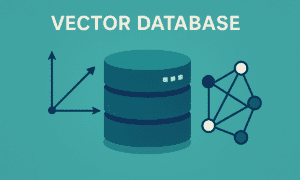The fintech industry continues to evolve as many processes become increasingly digital. Each year, companies offer new solutions that transform many financial services, making them more secure and client-focused.
Global forecasts predict that the worldwide fintech market will reach nearly $700 billion by 2030. This year alone, fintech companies have brought new innovative tools that specifically support the boom of e-commerce and online transactions.
The following are some of these emerging technologies. Learn how they’re shaping today’s financial services by reading below.
Artificial Intelligence (AI) & Machine Learning (ML)
AI and ML have revolutionized many processes in different industries. Generally, these technologies help businesses by automating repetitive tasks and executing data-driven decisions, offering better productivity and streamlined procedures.
Aside from automating payments, these technologies are known to impact risk management significantly. Fintech companies have leveraged them to monitor transactions and detect any anomalies or fraud attempts. They can also use them to understand customers better, from credit scores to risk profiles, allowing financial services to create more robust loan approvals.
Through these tools, businesses can reduce the cost and labor associated with the abovementioned processes. Plus, they can improve their overall accuracy and efficiency for different services.
Embedded Finance
Embedded finance refers to a broad category of financial services and products, like payments, within a non-finance platform or framework. This technology has been a game-changer, especially with the increasing demand for e-commerce websites, enabling users to manage their finances without jumping from one program to another.
One of the fastest-growing embedded finance models today is the “Buy Now, Pay Later” (BNPL). This model allows customers to purchase an item online and split their payments within a specific timeline.
The BNPL concept is widely offered by e-commerce builders, like OpenCart Cloud, enabling online businesses to provide flexible customer service and boost loyalty. As a result, experts believe that embedded finance will grow significantly in the following years.
Open Banking
Open banking, also known as open bank data, is an innovative technology that lets customers securely share their financial information with third-party companies, like budgeting and investment platforms. By connecting their banking data, customers enable these financial services to function accurately based on the information given.
This technology has revolutionized how people manage money and interact with financial institutions. Through open banking, customers have extensive control over where they store their financial data while having the ability to transfer it across various service providers if needed. It opens many opportunities for banks, payment companies, and other fintech entities to leverage customer data to improve their services and create new solutions.
IoT
The Internet of Things, or IoT, is a cohesive network of physical objects with embedded software, sensors, and other technologies. These devices are connected to the internet to collect data, analyze them, and execute specific actions without human prompts.
This technology has many implications in the finance industry, making banking more secure and convenient. For instance, people can now use their smartphones and smartwatches to make contactless payments with a simple tap on a sensor.
Fintech companies also use this model to gather insightful data on customer behavior, preferences, and usage patterns. This allows financial institutions to offer more personalized services, improve risk assessment, and conduct better fraud detection.
Today, many IoT-enabled devices are available to help with different processes, and it’s predicted to grow continuously. According to a recent report, the global IoT market is projected to grow to around $3,352.97 billion by 2030. That means we could see more robust and efficient financial services soon through this technology.
The Futures of Finance
The fintech industry continues to elevate our modern financial landscape. This year saw multiple improvements in various financial services as companies leverage emerging technologies, from embedded finance to IoT. As a result, customers have experienced more secure and efficient transactions, and institutions have gained valuable data to make their services more sophisticated.



































